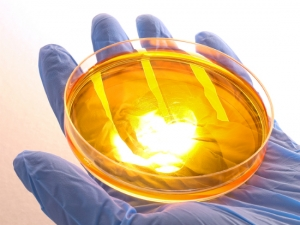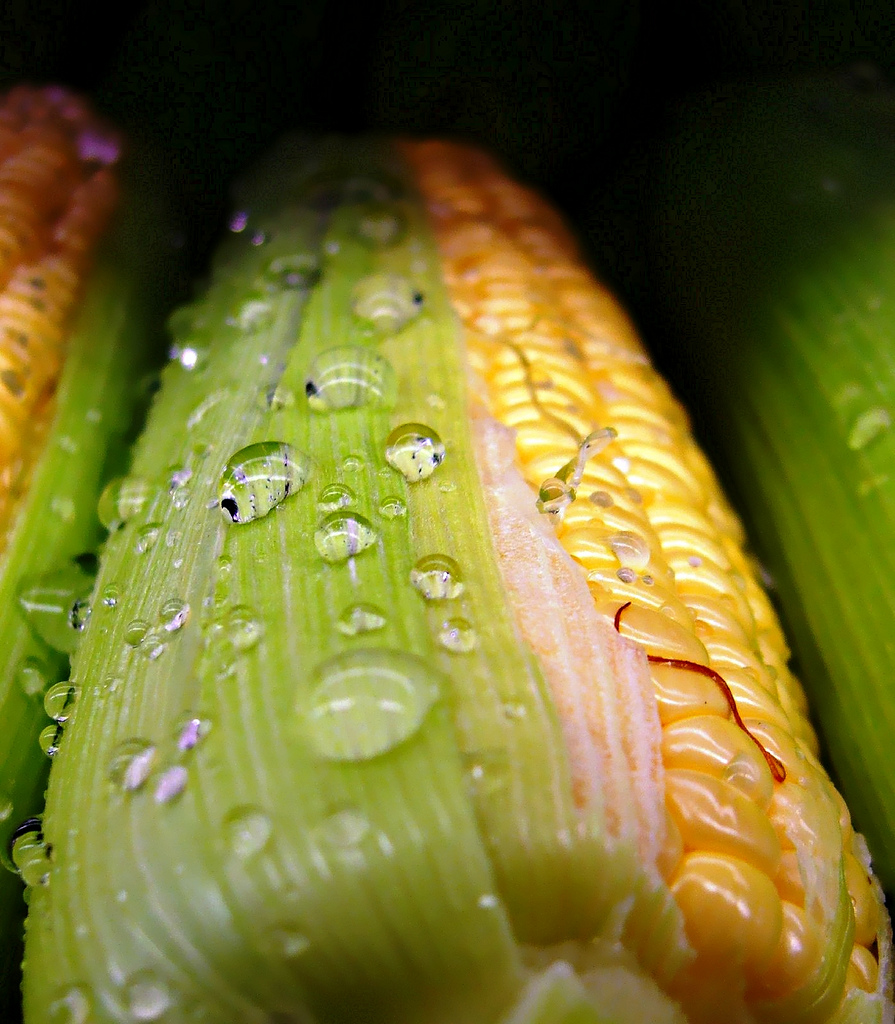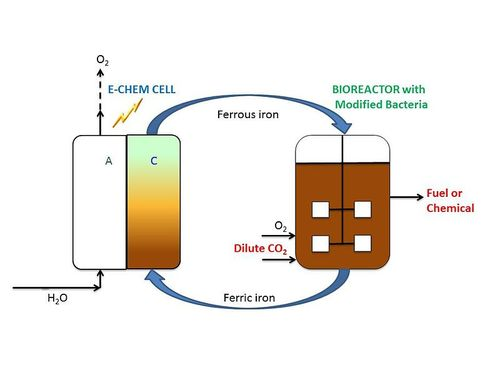 |
| Reviews and Templates for Expression We |
Are electricity-eating bacteria the next big thing in green fuel?

There's a large and growing list of renewable energy projects pumping out cleaner electricity these days. Photovoltaic panels produce direct current and solar concentrators drive steam turbines using sunlight. Wind turbines churning out megawatts of power dot the landscape of many countries. Other projects are looking to light communities through tides, running rivers and even the heat of the Earth.
Creating current is all well and good for energizing homes, businesses and even motor vehicles, but when it comes to flying airplanes or turning the screws on big ships, batteries storing alternative-energy-produced electricity just can't deliver the power needed yet. That's why these large machines still need combustible liquids such as diesel, aviation fuel and bunker oil that pack a bunch of energy into small volumes to drive their engines.
For these and other high-power applications, renewable energy needs to up its oomph. The best way to do that would be to concentrate sunlight's energy, for instance, into a machine that converts it directly into fuel. For well over a century, we've been using a version of this that comes out of the ground in the form of petroleum products, the hydrocarbon-rich remnants of organic matter that lived eons ago. The ancient organisms that form our fossil fuels are the concentrated distillates of sunlight.
The trouble with ethanol
But now that humanity is looking to replace fossil fuels, scientists need to recreate the process of compounding energy into combustible liquids in a renewable way. One approach researchers are taking is growing microorganisms that produce biofuel as a result of their metabolism. It may sound far-fetched, but yeasts and bacteria have been used for centuries to make ethanol, the intoxicating component in alcoholic beverages that is also flammable and can be used as a power source.
 Corn is delicious, but corn ethanol is inefficient to make. (Credit: darwin Bell via Flickr)
Corn is delicious, but corn ethanol is inefficient to make. (Credit: darwin Bell via Flickr)
To make biofuels, bacteria genetically modified to more efficiently make specific combustible compounds are fed plant-based complex carbohydrates or simple sugars. They take the carbon atoms and energy from metabolizing these plant molecules and convert them into a renewable source of fuel.
There's a fundamental problem, though. This direct conversion of plant biomass to fuels can provide the power needed to drive engines, but the process needs lots of land to grow the feedstock and, in the case of corn-based fuel, directly compete with the crop's use as food. Also, photosynthesis is an inefficient process — in fact, the amount of incoming sunlight energy that the typical plant can convert into the chemical energy stored in biomass doesn't get much above 2 or 3 percent.
And, if reducing the amount of carbon dioxide entering the atmosphere to slow climate change is the goal, conventional biofuels aren't quite there yet. If forests need to be cut to grow the fuel's biomass feedstock, or if fertilizers need to be used to grow that biomass, then the process isn't carbon neutral, meaning that the amount of CO2 released in burning the biofuel is equal to the amount the plants absorbed while growing.
Think big by thinking small
But what if there's a way to make biofuels directly from the energy of the sun, wind and moving water without needing to grow plants to feed in? And what if that process got the carbon for the carbon-based fuel directly from atmospheric CO2?
"When it comes to making biofuels with bacteria, the question is, can we do a better job of harvesting the sun's energy than plants can?" Columbia University chemical engineer Scott Banta told Txchnologist. "We need ways to use real-time energy from the sun and real-time carbon from the air, and turn it directly into gasoline."
Banta's lab is one of several making inroads to do just that, and his team recently secured a second round of funding from the Department of Energy's advanced research arm after seeing initial success growing biofuel-producing bacteria that use electricity for food. If it works, the technology, called electrofuels, could mean pumping liquid fuel out of solar panels and wind turbines. The Energy Department said electrofuel production has the potential to be 10 times more efficient than that used to make biofuels.
The team, collaborating with the lab of fellow Columbia electrochemical engineer Alan West, is using a kind of bacteria naturally found in mines. The organism, Acidithiobacillus ferrooxidans, oxidizes iron as its sole energy source and pulls in atmospheric CO2 for the carbon it needs. It already is being used in the mining industry to extract metals from ore.
A. ferrooxidans is grown in a bioreactor with iron in it. Electricity fed into the system reduces the iron so the bacteria can oxidize it to harvest electrons. Banta's team has been refining a process started by others that uses electrons and atmospheric CO2 to grow the bacterial cells.
"Others already figured that part out," he said. "Our major breakthrough is that we genetically modified the bacteria to produce two different fuel chemicals that can be blended into diesel. Now, instead of just making cells from electricity and air, we can hopefully make fuel from electricity and air."
 In the electrochemical reactor, ferric iron is reduced to ferrous iron. This is fed to the biochemical reactor where genetically modified iron-oxidizing cells (Acidithiobacillus ferrooxidans) are able to produce chemicals or fuels from CO2. This process provides a means to convert renewable energy (such as solar) to liquid fuels and chemicals. (Credit: Banta et al.)
In the electrochemical reactor, ferric iron is reduced to ferrous iron. This is fed to the biochemical reactor where genetically modified iron-oxidizing cells (Acidithiobacillus ferrooxidans) are able to produce chemicals or fuels from CO2. This process provides a means to convert renewable energy (such as solar) to liquid fuels and chemicals. (Credit: Banta et al.)
He said the results that they've achieved so far are promising, although the system's efficiency is low. The researchers will use the new round of funding to make the bioreactor system more efficient and to complete metabolic engineering on the bacteria to push it to produce more fuel.
"The science has been demonstrated on this process and now it's an engineering question of getting it up to scale," he said. "We're optimistic. We think this is an energy source of the future."
|
|
|
|
Copyright 2011 Energy and Technical Services Ltd. All Rights Reserved. Energyts.com |